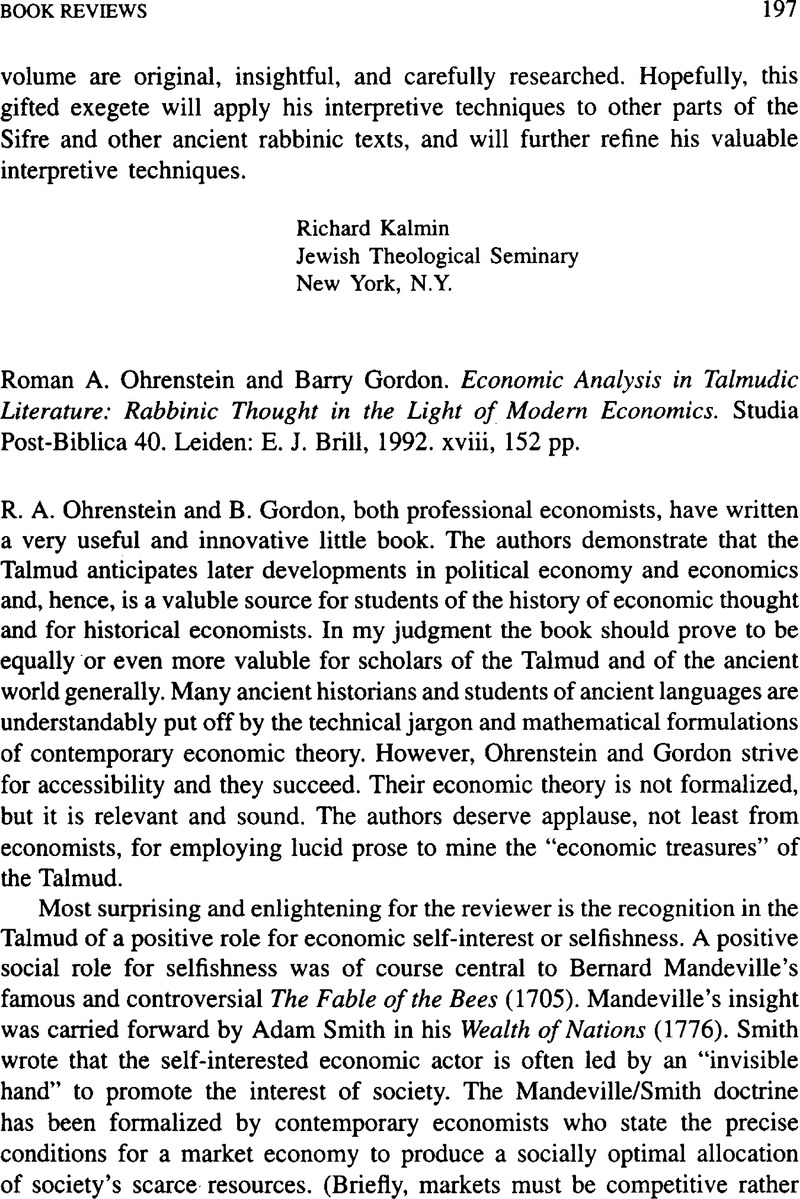No CrossRef data available.
Article contents
Roman A. Ohrenstein and Barry Gordon. Economic Analysis in Talmudic Literature: Rabbinic Thought in the Light of Modern Economics. Studia Post-Biblica 40. Leiden: E. J. Brill, 1992. xviii, 152 pp.
Published online by Cambridge University Press: 15 October 2009
Abstract

- Type
- Book Reviews
- Information
- Copyright
- Copyright © Association for Jewish Studies 1995
References
1. For a seminal contribution to this literature, see Collard, David, Altruism and the Economy: A Study of Non-Selfish Economics (Oxford, 1978).Google Scholar On the role of altruism in historical economic development and retrodevelopment, see Silver, Morris, Affluence, Altruism, and Atrophy: The Decline of Welfare States (New York, 1980).Google Scholar
2. This is not the only instance in which the rabbis and modern economists might analyze an economic problem differently. According to Rabbi Hanina (3rd cent. C.E.), if the price of grain is relatively low but grain is not easily obtainable, then, if I understand the authors (pp.48–50) correctly, it might be justified to interfere with market forces. If the price were “low” and the product unavailable, modern economists would immediately become suspicious that a maximum-price law was being enforced. Such laws when effective produce a shortage, i.e., the quantity supplied is less than the quantity demanded at the controlled price.
3. Yaron, Reuven, “Redemption of Persons in the Ancient Near East,” Revue Internationale des droits de l'antiquité 6 (1959): 159.Google ScholarSee further Silver, Morris, Economic Structures of the Ancient Near East (London 1985), pp. 48, 94, 102.Google Scholar


